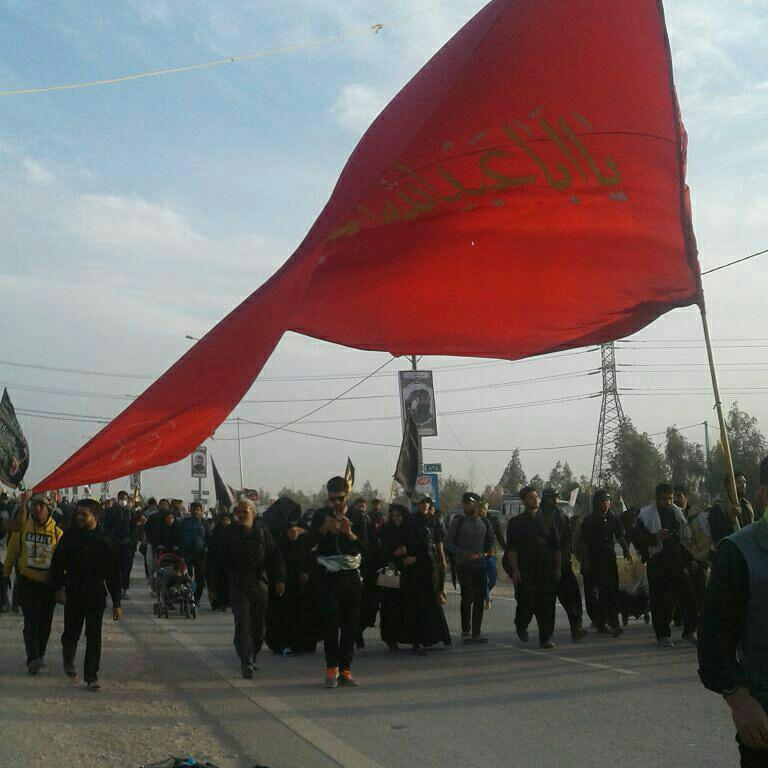
Millions of people march every year to visit the shrine of Imam Husayn in Karbala to mark the fortieth day after his martyrdom. The Infallible Imams has repeatedly emphasized the practice of a pilgrimage to Karbala. Apart from the general spiritual and ethical benefits that lie in visiting of the graves of Holy men and women, a pilgrimage to Karbala has additional benefits.
Commemorating Ashura every year preserves the tragic events of the day of Ashura in the hearts of the lovers of the Ahlul-Bayt and allows them to use this passionate outlet to strive in the path of righteousness and devote their lives to God and His religion.
In spite of the bans imposed by the Umayyad and Abbasid caliphs on visiting Karbala, the infallible Imams nevertheless, emphasized and encouraged the pilgrimage, stating the numerous blessings involved for the pilgrims of the grave of the Master of Martyrs. They strived to keep this center of spirituality, epic, and passion alive and prominent. They considered it to be a sign of loyalty to the oath with the Prophet of Islam and his household.
The infallible Imams were insistent on visiting the Holy Shrine of Imam Husayn even during the periods of danger and turmoil.
Regarding the danger involved on the road to Karbala, Imam Ja’far al-Sadiq said to Muhammad ibn Muslim:
“…For anyone who faces and feels danger on the pilgrimage to (the shrine of) Imam Husayn, God will secure him from the horror and dread of the Day of Judgement.”
Such emphasis on visiting the Imam’s shrine is a way of reviving the culture and attitude of Imam Husayn, who saved Islam by sacrificing his blood is known as the greatest reviver of Islam for all ages to come.
Visiting Karbala has always been an opportunity to join the lovers of the Ahlul-Bayt in unison, despite the restrictions and limitations imposed on the security and freedom of the people. After the uprising of Zayd ibn Ali, the son of Imam Sajjad in Kufah and his martyrdom in year 121, restrictions to visiting Karbala increased. Hesham ibn Abdul-Malek placed guards to control the visitors. During the reigns of Haroun al-Rashid and Mutawakkil the shrine of Husayn ibn Ali was often destructed and pilgrimage to the shrine banned many times.
During the reign of Haroun, He ordered to cut the cedar tree that marked the grave of Imam Husayn, so people would have a difficult time to find and gather there.
But the continuous restrictions of the caliphs were unsuccessful, and could not detach people’s connection to the aspiring grave of Husayn ibn Ali. The guards and rulers would inform Mutawakkil of people’s gatherings in the land of Nineveh, fearing that large gatherings surrounding the grave of Imam Husayn might lead to danger. Therefore, Mutawakkil would send his guards to disperse people, destroy the marks of the grave and ambush the visitors.
The visit to the shrine of the martyred Imam, highly advised by the Ahlul-Bayt reveals the intimacy and connection of the Shi’ahs to the grave of the martyr of Karbala. The delight of pilgrimage has always been a motivation of the Shi’ah in showing affection and Wilayat to the infallible Imams and the martyrs of Karbala. This value, through the centuries and by each generation, has been preserved by the Shi’ahs of Ahlul-Bayt as a precious jewel. Therefore, every year at the anniversary of the Arba’in of Imam Husayn, in spite of the security threats, millions of people march to Karbala passionately for the pilgrimage of that Martyred Imam.
(Selection from The Messages of Ashura by Jawad Muhaddithi with minor changes)
112/940